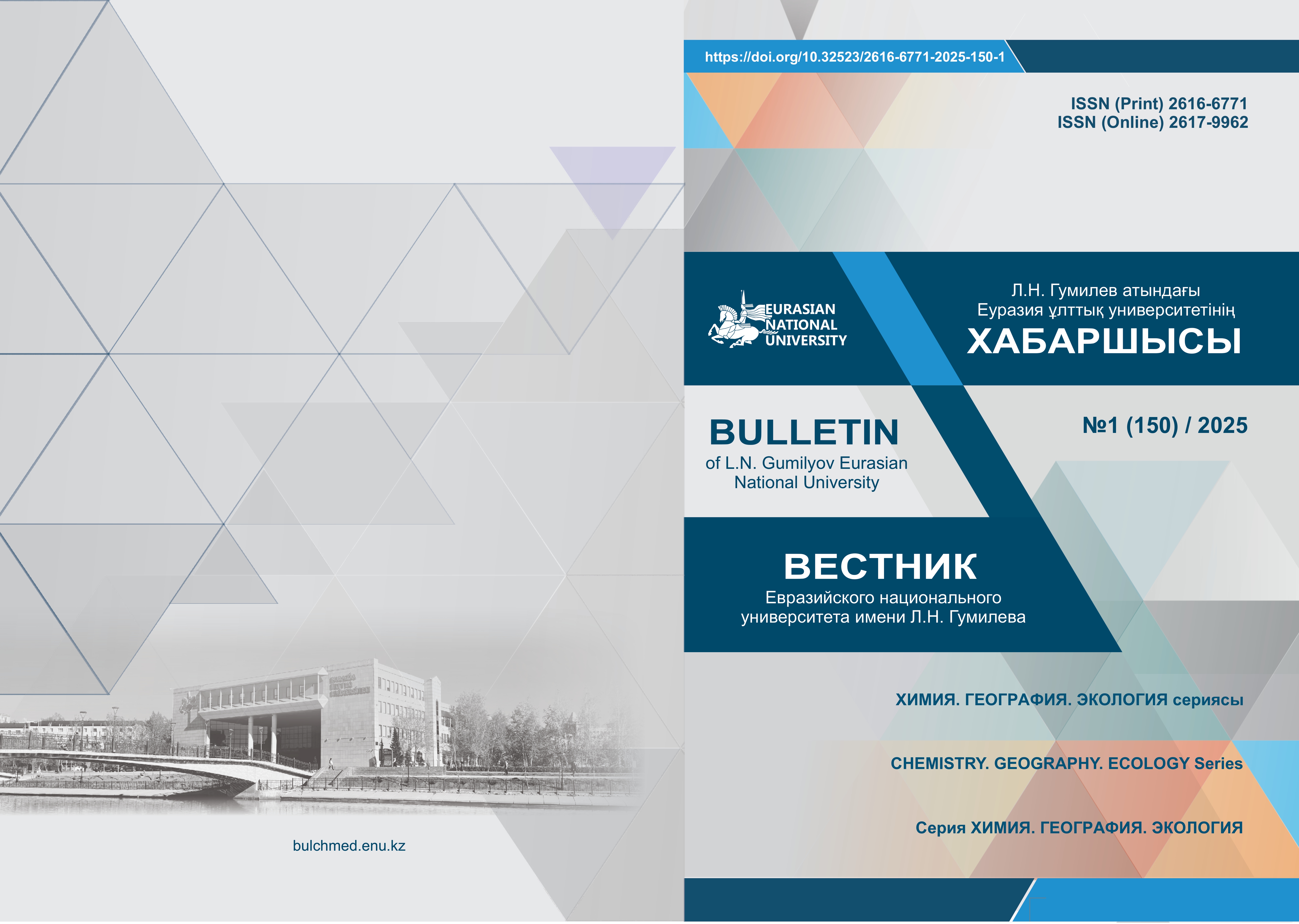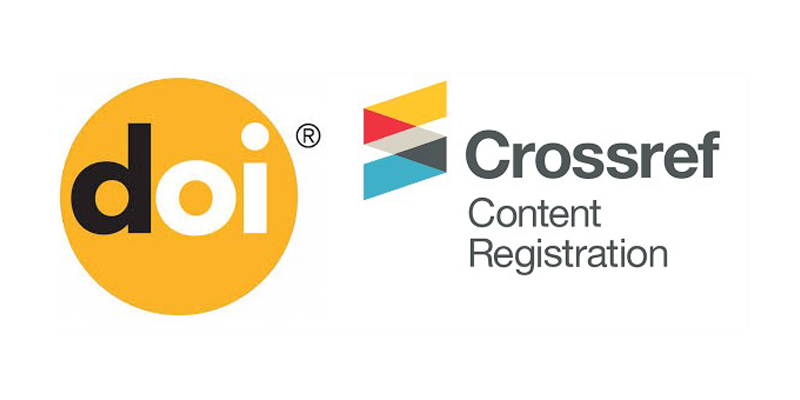Analysis of the influence of secondary polymers on the properties of polymer-modified bitumen
Views: 350 / PDF downloads: 153
DOI:
https://doi.org/10.32523/2616-6771-2025-150-1-66-81Keywords:
bitumen, secondary polypropylene, polymer additives, polymer-bitumen binders, modificationAbstract
This paper examines the modification of bitumen with secondary polypropylene in terms of chemical interactions, structural changes, and improved performance of the bitumen-polymer system. The processes of polymer dissolution and dispersion in the bitumen matrix are considered, as well as the effect of the molecular structure of polypropylene on the rheological, thermal, and mechanical properties of the resulting composite.
The key stages of preparing bitumen-polymer compositions are described, including thermal stabilization, homogenization, determining the optimal ratio of components, and methods for mixing them. An analysis of changes in the physico-chemical characteristics of the modified bitumen is carried out: softening temperature and needle penetration depth at 25°C.
The results of the study showed that the introduction of secondary polypropylene helps to increase heat resistance, increase viscosity, and improve the adhesive properties of the bitumen. This allows for its expanded use in asphalt concrete pavements, improving their durability and resistance to climatic factors. Additionally, various concentrations of the polymer additive (from 2% to 6%) and their effect on structural changes in the bitumen binder were studied. The data obtained indicate that the optimal concentration of polypropylene provides improved performance properties, reducing plastic deformation and increasing mechanical strength.
The use of secondary polypropylene allows not only to improve the quality of road surfaces, but also to solve the problem of recycling polymer waste, reducing the burden on the environment. This opens up prospects for further research in the field of polymer modification of bitumen and the development of more environmentally friendly and durable asphaltic concrete materials.
In relation to this, the mechanisms of interaction between polypropylene and the bitumen matrix are considered, including the effect of molecular weight, degree of crystallinity and thermal stability of the polymer. A comparative analysis of the properties of bitumen modified with various types of secondary polymers was carried out, which made it possible to identify the best option for use in road construction.
Downloads
References
Al-Abdul Wahhab, H. I., Dalhat, M. A., & Habib, M. A. (2017). Storage stability and high-temperature performance of asphalt binder modified with recycled plastic. Road Materials and Pavement Design, 18(sup1), 1117–1134. https://doi.org/10.1080/14680629.2016.1207554
Behl, A., Sharma, G., & Kumar, G. (2014). A sustainable approach: Utilization of waste PVC in asphalting of roads. Construction and Building Materials, 54, 113–117. https://doi.org/10.1016/J.CONBUILDMAT.2013.12.050
Behnood, A., Modiri Gharehveran, M. (2019). Morphology, rheology, and physical properties of polymer-modified asphalt binders. European Polymer Journal, 112, 766–791. https://doi.org/10.1016/J.EURPOLYMJ.2018.10.049
Brasileiro, L., Moreno-Navarro, F., Tauste-Martínez, R., Matos, J., & Rubio-Gámez, M. del C. (2019). Reclaimed polymers as asphalt binder modifiers for more sustainable roads: A review. Sustainability, 11(3), 646. https://doi.org/10.3390/SU11030646
, Celauro, C., Saroufim, E., Mistretta, M. C., & La Mantia, F. P. (2020). Influence of short-term aging on mechanical properties and morphology of polymer-modified bitumen with recycled plastics from waste materials. Polymers, 12(9), 1985. https://doi.org/10.3390/POLYM12091985
Dalhat, M. A., & Al-Abdul Wahhab, H. I. (2017). Performance of recycled plastic waste modified asphalt binder in Saudi Arabia. International Journal of Pavement Engineering, 18(4), 349–357. https://doi.org/10.1080/10298436.2015.1088150
Dalhat, M. A., & Al-Adham, K. (2023). Review on laboratory preparation processes of polymer-modified asphalt binder. Journal of Traffic and Transportation Engineering (English Edition), 10(2), 159–184. https://doi.org/10.1016/J.JTTE.2023.01.002
García-Morales, M., Partal, P., Navarro, F. J., Martínez-Boza, F., Gallegos, C., González, N., González, O., & Muñoz, M. E. (2004). Viscous properties and microstructure of recycled EVA-modified bitumen. Fuel, 83(1), 31–38. https://doi.org/10.1016/S0016-2361(03)00217-5
García-Travé, G., Tauste, R., Moreno-Navarro, F., Sol-Sánchez, M., & Rubio-Gámez, M. C. (2016). Use of reclaimed geomembranes for modification of mechanical performance of bituminous binders. Journal of Materials in Civil Engineering, 28(7), 04016021. https://doi.org/10.1061/(ASCE)MT.1943-5533.0001507
Geyer, R., Jambeck, J. R., & Law, K. L. (2017). Production, use, and fate of all plastics ever made. Science Advances, 3(7), e1700782. https://doi.org/10.1126/sciadv.1700782/suppl_file/1700782_sm.pdf
Hossain, N., Zaini, J., Mahlia, T. M. I., & Azad, A. K. (2019). Elemental, morphological and thermal analysis of mixed microalgae species from drain water. Renewable Energy, 131, 617–624. https://doi.org/10.1016/J.RENENE.2018.07.082
Ishag Obi, N., Najib Razali, M., & Hamid Nour, A. (2022). The potentials of emulsified modified bitumen (EMB) for coating and insulation: An overview. Materials Today: Proceedings, 57, 1288–1295. https://doi.org/10.1016/J.MATPR.2021.11.598
Joohari, I. B., & Giustozzi, F. (2020). Chemical and high-temperature rheological properties of recycled plastics-polymer modified hybrid bitumen. Journal of Cleaner Production, 276, 123064. https://doi.org/10.1016/J.JCLEPRO.2020.123064
Karmakar, S., & Roy, T. K. (2020). Influence of plastic waste on chemical and mechanical properties of modified bitumen used in the bituminous mix for flexible pavement. Journal of Materials in Civil Engineering, 33(1), 04020440. https://doi.org/10.1061/(ASCE)MT.1943-5533.0003545
Khan, I. M., Kabir, S., Alhussain, M. A., & Almansoor, F. F. (2016). Asphalt design using recycled plastic and crumb-rubber waste for sustainable pavement construction. Procedia Engineering, 145, 1557–1564. https://doi.org/10.1016/J.PROENG.2016.04.196
Lee, S., Park, Y. K., & Lee, J. (2023). Upcycling of plastic and tire waste toward use as modifier for asphalt binder. Energy & Environment, 35(4), 510–524. https://doi.org/10.1177/0958305X231173999
Maharaj, R., Maharaj, C., & Hosein, A. (2018). Performance of waste polymer modified road paving materials. Journal of Elastomers & Plastics, 34(1), 19–33. https://doi.org/10.1177/147776061803400102
Mazurek, G., Šrámek, J., & Buczyński, P. (2022). Composition optimisation of selected waste polymer-modified bitumen. Materials, 15(24), 8714. https://doi.org/10.3390/MA15248714
Nizamuddin, S., Boom, Y. J., & Giustozzi, F. (2021). Sustainable polymers from recycled waste plastics and their virgin counterparts as bitumen modifiers: A comprehensive review. Polymers, 13(19), 3242. https://doi.org/10.3390/POLYM13193242
Plastics-the facts 2016: An analysis of European plastics production, demand and waste data. (n.d.).
Sarang, G., Lekha, B. M., Krishna, G., & Ravi Shankar, A. U. (2016). Comparison of stone matrix asphalt mixtures with polymer-modified bitumen and shredded waste plastics. Road Materials and Pavement Design, 17(4), 933–945. https://doi.org/10.1080/14680629.2015.1124799
Syrmanova, K. K., Botashev, E. T., Tleuov, D. B., Suleimenova, M. T., Eshankulov, A. A., & Kaldybekova, Z. B. (2017). Research of oil road bitumen modification with low density polyethylene. Oriental Journal of Chemistry, 33(1), 470–477. https://doi.org/10.13005/OJC/330155
Tahmoorian, F., Samali, B., & Yeaman, J. (2018). Evaluation of structural and thermal properties of rubber and HDPE for utilization as binder modifier. In Modified Asphalt. https://doi.org/10.5772/INTECHOPEN.75535
Wang, J., Yuan, J., Xiao, F., Li, Z., Wang, J., & Xu, Z. (2018). Performance investigation and sustainability evaluation of multiple-polymer asphalt mixtures in airfield pavement. Journal of Cleaner Production, 189, 67–77. https://doi.org/10.1016/J.JCLEPRO.2018.03.208
Yang, Q., Lin, J., Wang, X., Wang, D., Xie, N., & Shi, X. (2024). A review of polymer-modified asphalt binder: Modification mechanisms and mechanical properties. Cleaner Materials, 12, 100255. https://doi.org/10.1016/J.CLEMA.2024.100255
Downloads
Published
Issue
Section
License
Copyright (c) 2025 A. Syzdyk, G. Seitenova, E. Zhakmanova, L. Tolymbekova (Author)

This work is licensed under a Creative Commons Attribution-NonCommercial 4.0 International License.








